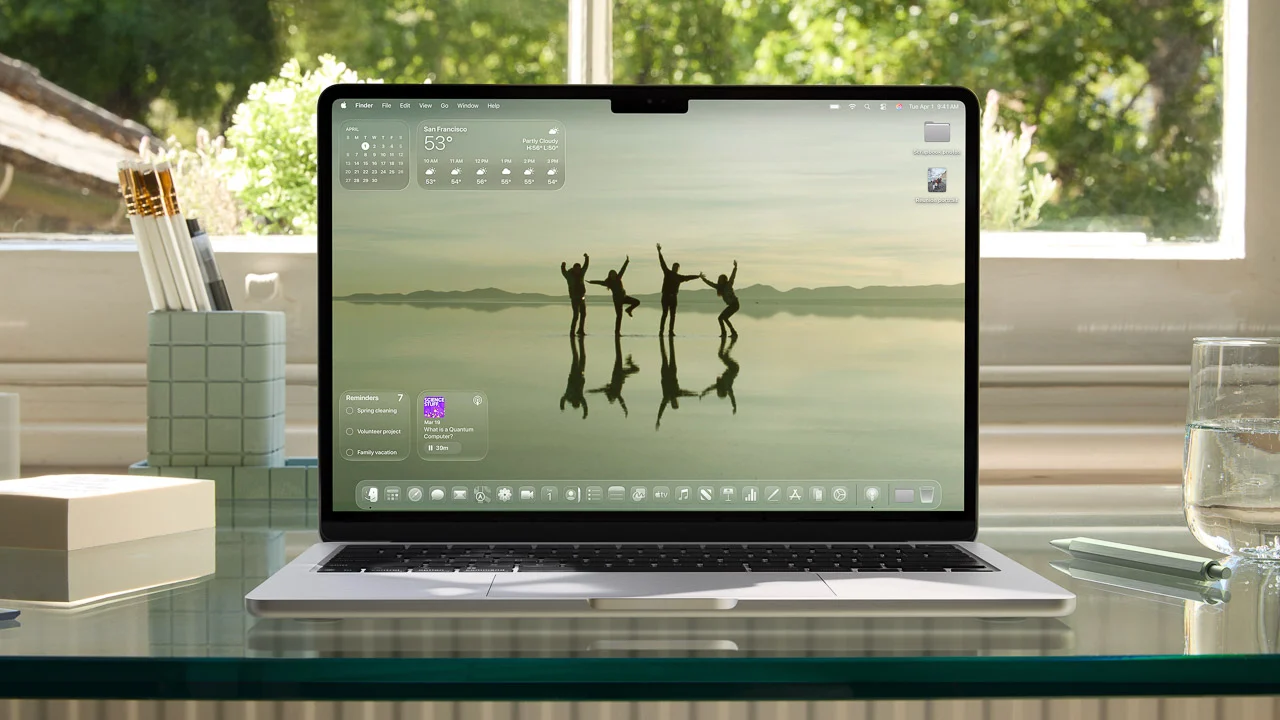Apple has once again redefined the digital experience with the introduction of Liquid Glass, a groundbreaking universal design language unveiled at WWDC 2025. This marks the most significant interface redesign since iOS 7’s revolutionary flat design in 2013, promising to transform how users interact with their Apple devices across all platforms.
Understanding Apple’s Liquid Glass Design Philosophy
The Liquid Glass interface represents Apple’s ambitious vision for creating a cohesive, immersive user experience across its entire ecosystem. This innovative design language introduces translucent materials that behave like actual glass, creating dynamic visual effects that respond to user interactions and environmental changes in real-time.
Drawing inspiration from visionOS, Apple’s spatial computing platform, Liquid Glass brings depth and dimensionality to traditional flat interfaces. The design philosophy centers around creating interfaces that feel alive, responsive, and naturally integrated with the content they display.
Key Features and Visual Elements of Liquid Glass
Dynamic Translucent Materials
The cornerstone of Liquid Glass lies in its revolutionary translucent material system. Unlike static design elements, these glass-like surfaces actively reflect and refract background colors and content, creating a living interface that adapts to whatever appears behind it. This dynamic behavior is powered by advanced graphics technologies that render background shapes and colors in real-time.
Intelligent Light and Dark Adaptation
One of the most impressive aspects of Liquid Glass is its intelligent environmental awareness. The interface seamlessly adapts between light and dark environments, automatically adjusting transparency levels, contrast, and visual hierarchy to ensure optimal readability and user comfort across different lighting conditions.
Rounded Corner Revolution
Apple has completely reimagined interface geometry with Liquid Glass, replacing traditional rectangular edges with sophisticated rounded corners across toolbars, tab bars, sidebars, and app windows. This design choice creates a more organic, approachable feel that reduces visual tension and improves overall user experience.
Platform Implementation Across Apple’s Ecosystem
iOS 26 and iPadOS 26: Mobile Excellence
On iPhone and iPad, Liquid Glass transforms fundamental interface elements including the Lock Screen, Home Screen, notifications, and Control Center. The design creates a seamless flow between different areas of the interface, with translucent elements that provide context while maintaining visual clarity.
The implementation extends to in-app controls, which are now positioned above applications and expand dynamically when users need additional options. This adaptive behavior reduces interface complexity while maintaining full functionality.
macOS Tahoe 26: Desktop Innovation
Mac users will experience Liquid Glass through enhanced sidebars that expand and contract based on scrolling behavior, creating an intuitive relationship between content and navigation. The new transparent menu bar complements the overall aesthetic while maintaining the professional appearance Mac users expect.
Desktop customization reaches new heights with widgets and app icons featuring sophisticated light and dark tints, allowing users to personalize their workspace while maintaining visual coherence.
watchOS 26 and tvOS 26: Consistent Experience
The universal nature of Liquid Glass ensures that Apple Watch and Apple TV users enjoy the same premium interface experience, creating true ecosystem consistency across all Apple devices.
Technical Innovation Behind Liquid Glass
Real-Time Rendering Technology
The magic of Liquid Glass lies in its sophisticated real-time rendering capabilities. Apple’s engineering teams have developed new graphics technologies that can process background information instantly, creating dynamic reflections and refractions that respond to user movements and content changes.
Collaborative Development Approach
This design language represents unprecedented collaboration between Apple’s design and engineering teams. The result is an interface that doesn’t just look beautiful but performs flawlessly across different hardware configurations and use cases.
Impact on First-Party Applications
Apple’s commitment to Liquid Glass extends throughout its application ecosystem. Popular apps including Camera, Photos, Safari, FaceTime, Apple Music, Apple News, and Apple Podcasts have been redesigned to showcase the new interface language.
These applications demonstrate how Liquid Glass enhances functionality while maintaining visual appeal. For example, media controls now feature glass-like transparency that provides context about underlying content while remaining easily accessible and functional.
User Experience Benefits
Enhanced Visual Hierarchy
Liquid Glass creates natural visual hierarchy through its layered transparency system. Users can instantly understand the relationship between different interface elements, improving navigation efficiency and reducing cognitive load.
Improved Focus and Context
The translucent nature of Liquid Glass elements helps users maintain awareness of background content while interacting with foreground controls. This contextual awareness enhances productivity and reduces the disorientation often associated with modal interfaces.
Accessibility Considerations
Apple has designed Liquid Glass with accessibility in mind, ensuring that dynamic transparency doesn’t compromise readability or navigation for users with visual impairments. The intelligent adaptation system maintains appropriate contrast levels across all lighting conditions and usage scenarios.
Future Implications for Digital Design
The introduction of Liquid Glass signals a significant shift in digital interface design philosophy. By moving beyond flat design principles, Apple is pioneering a new era of dimensional, responsive interfaces that blur the line between digital and physical experiences.
This design language will likely influence interface design across the technology industry, setting new standards for visual sophistication and user experience excellence.
Getting Started with Liquid Glass
Apple has made Liquid Glass available through developer beta programs, allowing app developers to integrate the new design language into their applications. This early access ensures a rich ecosystem of compatible applications when the public release arrives.
Conclusion
Apple’s Liquid Glass represents more than just a visual refresh—it’s a fundamental reimagining of how users interact with digital interfaces. By combining advanced graphics technology with thoughtful design principles, Apple has created a universal design language that enhances functionality while delivering unprecedented visual sophistication.
As we move toward the public release of iOS 26, iPadOS 26, macOS Tahoe 26, watchOS 26, and tvOS 26, Liquid Glass promises to transform the Apple ecosystem into a more cohesive, intuitive, and visually stunning experience for millions of users worldwide.
The future of digital interfaces has arrived, and it’s beautifully transparent.

